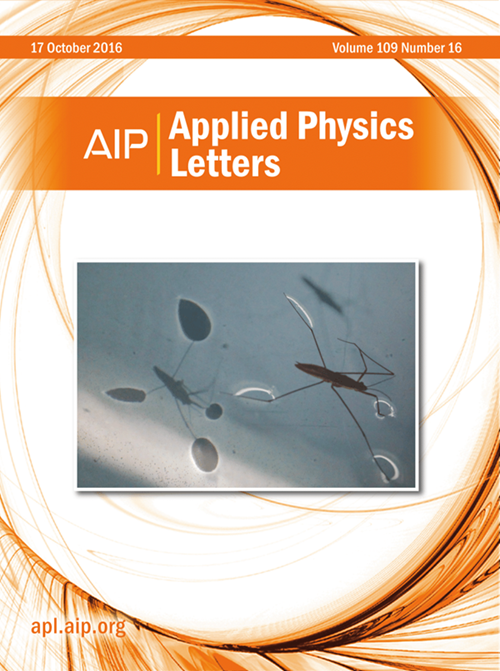Very high Curie temperature (470–530 K) in (Ga,Fe)Sb ferromagnetic semiconductor grown by step-flow mode on vicinal GaAs substrates
IF 3.5
2区 物理与天体物理
Q2 PHYSICS, APPLIED
引用次数: 0
Abstract
Narrow-gap Fe-doped III–V ferromagnetic semiconductors (FMSs), such as (In,Fe)Sb, (Ga,Fe)Sb, and (In,Fe)Sb, are promising candidates for active semiconductor spintronic devices thanks to their high Curie temperature (TC). In this work, we show that by growing (Ga,Fe)Sb thin films by the step-flow mode on vicinal GaAs (100) substrates with a high off-angle of 10°, we can achieve high-quality (Ga0.76,Fe0.24)Sb FMS with TC as high as 470–530 K, which are the highest TC reported so far for FMSs. The magnetic moment of Fe atoms in our sample reaches 4.5 μB/atom, which is close to the ideal magnetic moment of substitutional Fe3+ atoms (5 μB/atom) in a zinc blende crystal structure, and is twice that of α-Fe metal. Our work establishes a growth technique of very high TC FMSs for room-temperature semiconductor spintronic devices.在邻近的GaAs衬底上采用步进流动方式生长的(Ga,Fe)Sb铁磁半导体具有极高的居里温度(470-530 K)
窄间隙掺铁III-V铁磁半导体(fms),如(In,Fe)Sb, (Ga,Fe)Sb和(In,Fe)Sb,由于其高居里温度(TC),是有源半导体自旋电子器件的有希望的候选者。在这项工作中,我们表明,通过在附近的GaAs(100)衬底上以10°的高离角生长(Ga,Fe)Sb薄膜,我们可以获得高质量的(Ga0.76,Fe0.24)Sb FMS, TC高达470-530 K,这是迄今为止报道的FMS最高的TC。样品中Fe原子的磁矩达到4.5 μB/原子,接近闪锌矿晶体结构中取代态Fe3+原子的理想磁矩(5 μB/原子),是α-Fe金属的2倍。我们的工作建立了一种用于室温半导体自旋电子器件的高TC FMSs的生长技术。
本文章由计算机程序翻译,如有差异,请以英文原文为准。
求助全文
约1分钟内获得全文
求助全文
来源期刊

Applied Physics Letters
物理-物理:应用
CiteScore
6.40
自引率
10.00%
发文量
1821
审稿时长
1.6 months
期刊介绍:
Applied Physics Letters (APL) features concise, up-to-date reports on significant new findings in applied physics. Emphasizing rapid dissemination of key data and new physical insights, APL offers prompt publication of new experimental and theoretical papers reporting applications of physics phenomena to all branches of science, engineering, and modern technology.
In addition to regular articles, the journal also publishes invited Fast Track, Perspectives, and in-depth Editorials which report on cutting-edge areas in applied physics.
APL Perspectives are forward-looking invited letters which highlight recent developments or discoveries. Emphasis is placed on very recent developments, potentially disruptive technologies, open questions and possible solutions. They also include a mini-roadmap detailing where the community should direct efforts in order for the phenomena to be viable for application and the challenges associated with meeting that performance threshold. Perspectives are characterized by personal viewpoints and opinions of recognized experts in the field.
Fast Track articles are invited original research articles that report results that are particularly novel and important or provide a significant advancement in an emerging field. Because of the urgency and scientific importance of the work, the peer review process is accelerated. If, during the review process, it becomes apparent that the paper does not meet the Fast Track criterion, it is returned to a normal track.
 求助内容:
求助内容: 应助结果提醒方式:
应助结果提醒方式:


